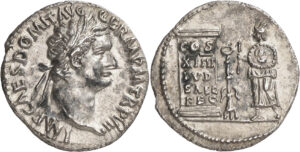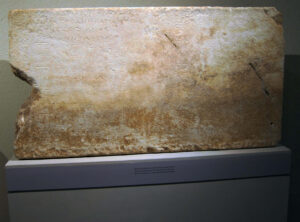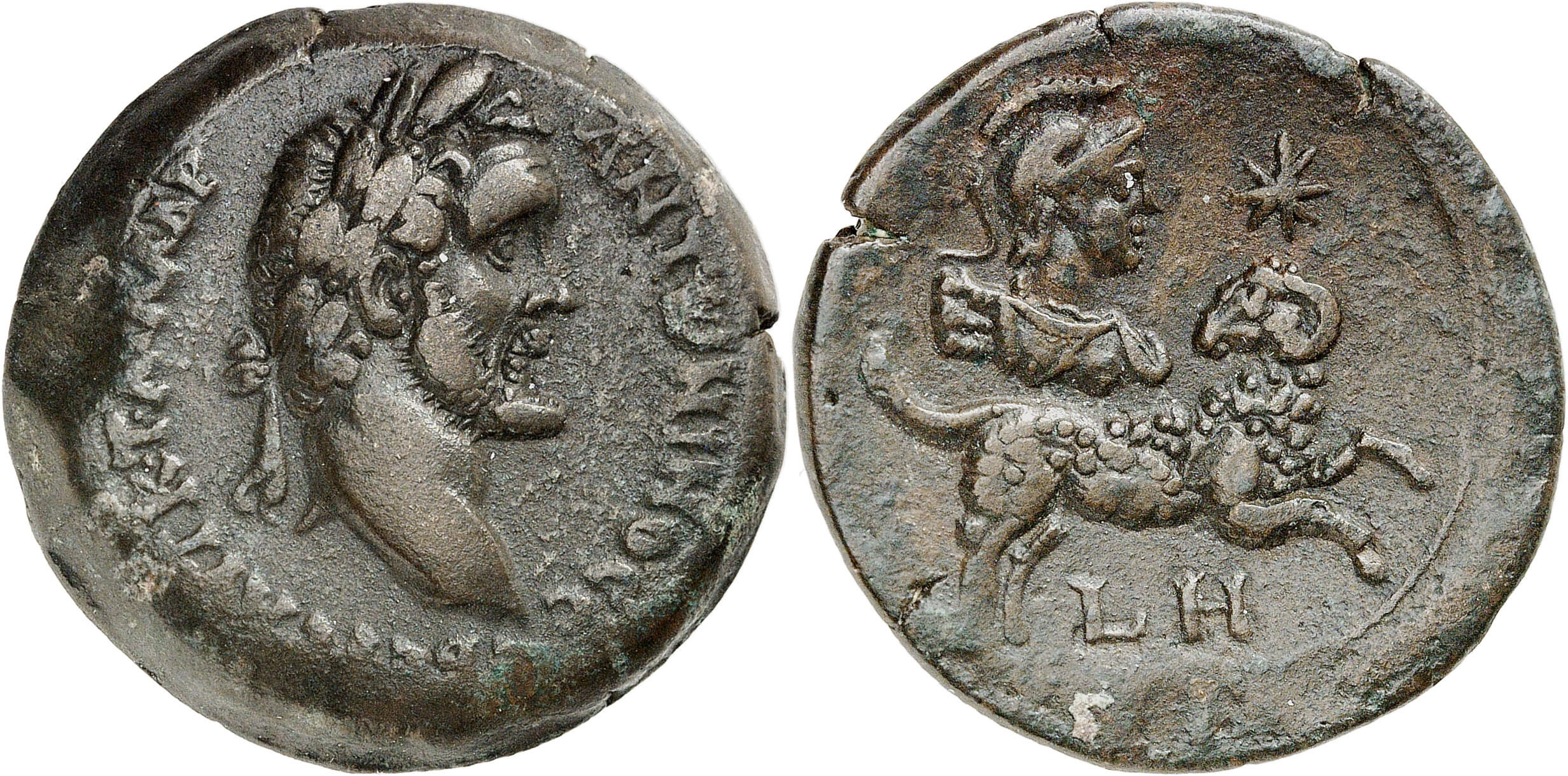How Do We Even Know When The Battle at Marathon Took Place?
The Sothic Cycle
The basis of their civil calendar wasn’t the sun itself, but Sirius, who moves parallel to the sun and is called Sothis in Egypt. The rising of Sirius at the time of daybreak took place in Memphis – according to our calendar – on 19th July and signalled the beginning of annual flooding of the Nile river.
The country owed its wealth to the Nile. That’s why the entire civil year revolved around the Nile river and the fertility associated with it. Egyptian farmers divided the year into three seasons: flooding from the beginning of the year on 19th July to November; sowing / springing / growing from November to March; heat / harvest until July.
The religious year, on the other hand, was based on a lunar calendar: every month was dedicated to a deity under whose protection the month stood and whose main festival was celebrated in that very month.
There was a little flaw to the system: the Sothic and lunar calendars were of different lengths and, therefore, differed a little more every year resulting in a growing misalignment of both systems.

Künker auction 347 (22nd March 2021), Lot 192: Alexandria. Antoninus Pius (138-161). Year 8 (= 144/5). Rv. Head of Sol and Selene in a circle of zodiac signs. Dattari 2984 (this specimen). Kampmann / Ganschow 35.257. Very rare. Extraordinary quality for this issue. Very fine. Estimate: 5,000 EUR.
When the beginning of the Sothic and the lunar cycle coincided again after 1,460 years, one Sothic period ended. And this event occurred – as the Roman astronomer Censorinus tells us and as modern astronomers calculated – on 19th July 139 of our calendar.
How Important a Single Date Can Be!
The Egyptian Sothic cycle is of utmost importance for modern historical research. For historians, only dates that can be linked to the modern calendar are part of the “absolute” chronology. If we only know the order in which certain events occurred, we are talking about “relative” chronology.
If you delve into the original works of Thucydides, you will quickly notice that he gives an exact account of the events of the Peloponnesian War year by year, but the dates he mentions don’t tell you anything at all. This is because Thucydides dates the events by associating them with the officials of various Greek cities. That worked excellent back then because everyone knew who had been an official at what time and, if you forgot about one of them, you could consult the publicly posted lists of officials. But we wouldn’t be able to use these dates if Alexander of Macedonia hadn’t conquered Egypt.
This made him a pharaoh, and therefore all Egyptian lists of kings mention him as well as the years of his reign. And thanks to the absolute chronology provided by the Sothic cycle, we can calculate what dates of our calendar the dates on these lists of kings correspond to. And that, in turn, means that all events of ancient history can ultimately be dated thanks to Egyptian chronology. The reason for this is that another scholar of Alexandria, Eratosthenes of Cyrene, has left us a relative chronology of Greek history:
From the conquest of Troy to the return of the Heraclidae: 80 years
To the settlement in Ionia: 60 years
To the guardianship of Lycurgus: 159 years
To the start of the first Olympics: 108 years
To the campaign of Xerxes: 297 years
To the beginning of the Peloponnesian War: 48 years
To the end of the war and the victory over Athens: 27 years
To the Battle of Leuctra: 34 years
To the death of King Philip: 35 years
To the death of Alexander: 12 years
Thanks to the combination of Egyptian lists of kings and the Sothic cycle, we can calculate that Alexander died in 324/3 BC. By means of this single absolute date, we can calculate all other dates backwards, although we will ignore the dates that are almost mythical for setting up this table.
Start of the first Olympics: 776
Campaign of Xerxes: 479
Beginning of the Peloponnesian War: 431
End of the Peloponnesian War and victory over Athens: 404
Battle of Leuctra: 370
Death of King Philip: 335
Death of Alexander: 323
This means that our entire Greek chronology would hang by a thread if there wasn’t one source confirming it: Thucydides I, 28 mentions a solar eclipse in his Peloponnesian War, which today’s astronomers date to 3rd August 431, making it likely that Eratosthenes of Cyrene was right at least until the beginning of the Peloponnesian War.

Künker auction 347 (23rd March 2021), Lot 1092: Domitianus, 81-96. Denarius 88. Rv. Herald announcing the Secular Games. Rare. Very fine +. Estimate: 150 EUR.

Künker auction 347 (23rd March 2021), Lot 1093: Domitianus (81-96). Denarius, 88. Rv. Herald announcing the Secular Games, in front of him a stele with a legend referring to the Secular Games, and a candelabra for offering incense. Estimate: 300 EUR.
The Roman Saeculum
But let’s go back to Antoninus Pius and his zodiac series. Like all Romans, he was familiar with the idea that time moves in a kind of circle. Romans knew the ‘saeculum’, a cycle that began anew once all people who had witnessed its beginning were no longer among the living. Augustus had used this idea to stage the dawn of a new golden age after the civil war. His successors were to imitate this again and again – although they didn’t have as much success with it.
Historians didn’t agree on when a saeculum began, which gave some leeway to every emperor, and Antoninus Pius made use of it in Egypt.
Antoninus Pius and His Astrological Series
In the 8th year of his reign, he minted a series that picked up the motif of the Sothic year with sun and moon and depicted various zodiac signs and houses. And by doing so, the emperor was at the cutting edge of science. The astronomer Claudius Ptolemy, who is the originator of the “Ptolemaic worldview”, lived and worked in Alexandria.
He systemized the movements of the planets by having them – according to his vision – describe a perfectly circular path on crystalline spheres. This made them go through the 12 zodiac signs enabling scholars to create more accurate horoscopes, as Ptolemy stated in his Tetrabiblos.
Unfortunately, we do not know the exact occasion for which this wonderful series was minted. We should keep in mind that the human factor might have also played a role in ancient times. Perhaps it was the emperor himself, or his representative in Alexandria, who decided after a discussion with Claudius Ptolemy or after reading his work that his astrological findings were perfect material for a coin series.
The last collector who was able to gather the zodiac sign series with this level of completeness and quality was probably Giovanni Dattari, the Italian coin and antiques dealer who died on 18 February 1923 in Cairo.
Thus, thanks to a wealth of material. Künker’s auction 347 provides every collector of Alexandrian coins with a once-in-a-collector’s-lifetime opportunity.
All lots of the auction 347 can be found in the online catalogue from Künker.
The history of Egypt and Alexandria can be viewed perfectly through the ancient coins. Here you can find the brief numismatic survey by Ursula Kampmann.
The Institute for Classical Studies from the University of Cologne was gifted an extensive collection, which makes the coin collection one of the most important collections of coins from Alexandria.
The former custodian of the Cologne coin collection published in 2013 together with Manfred Weber a complete type catalogue for the coins of the Alexandrinian nomes.














